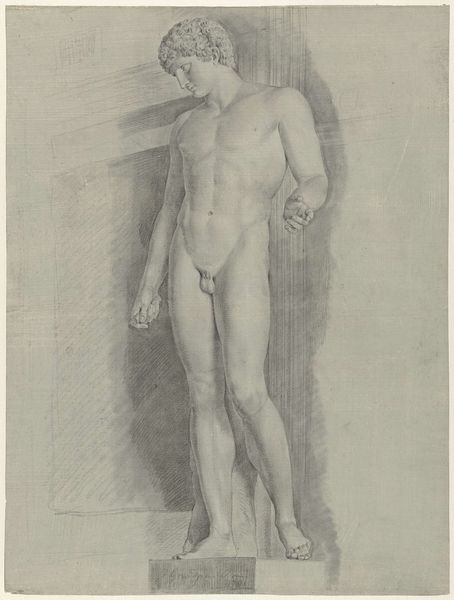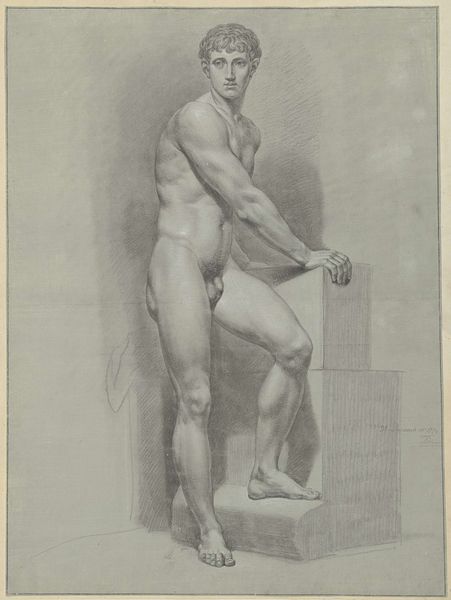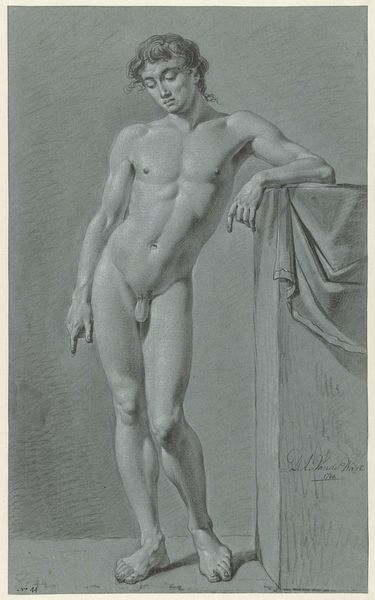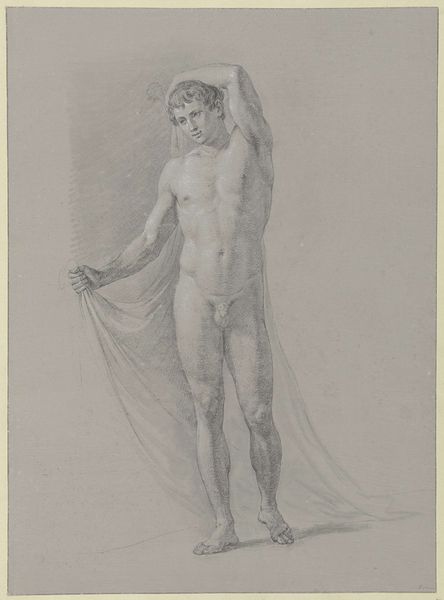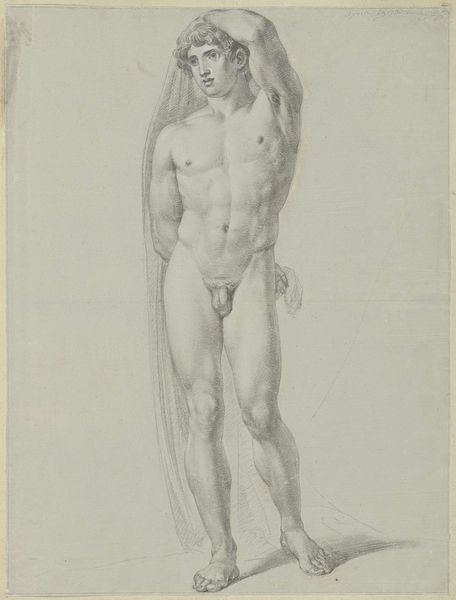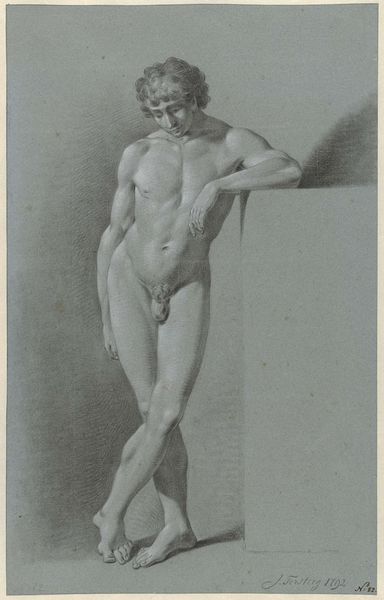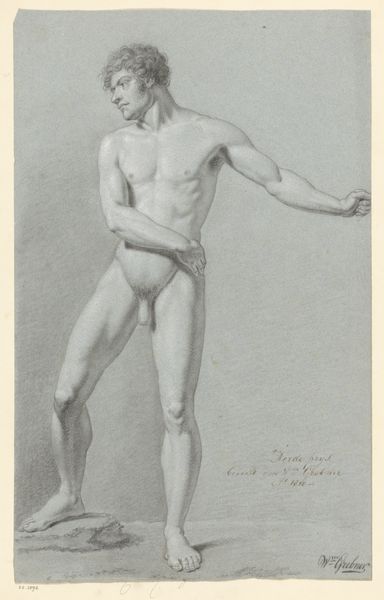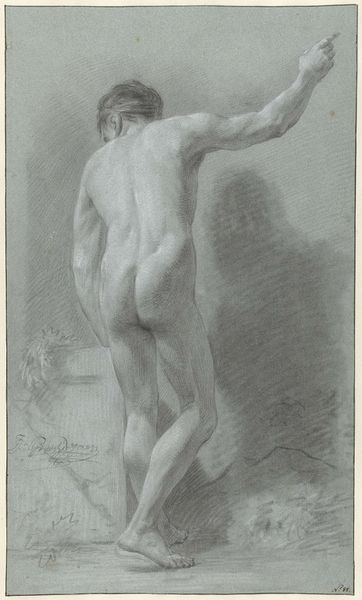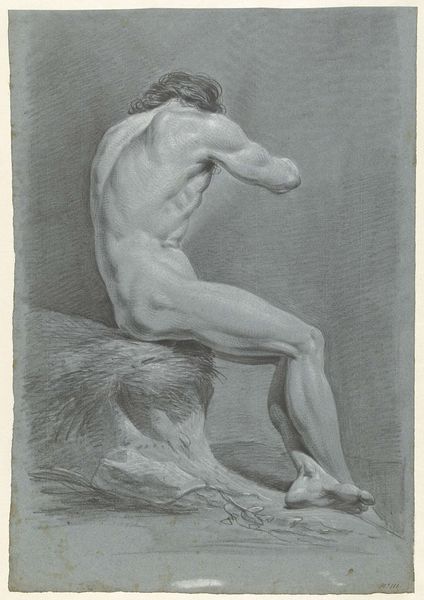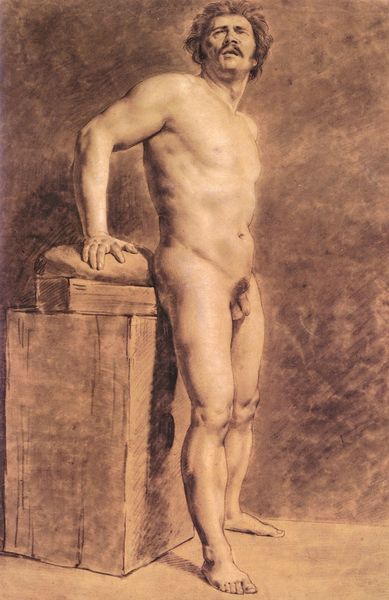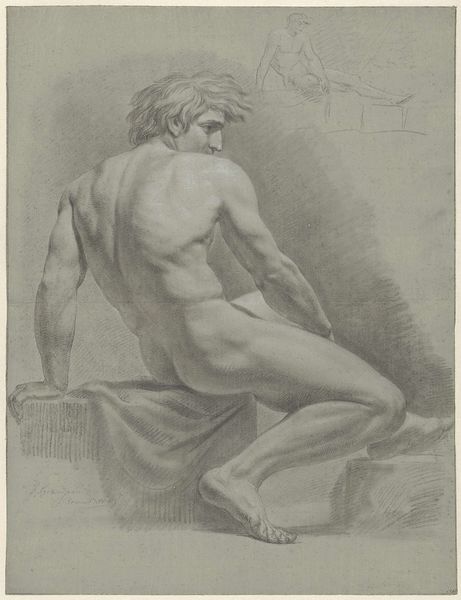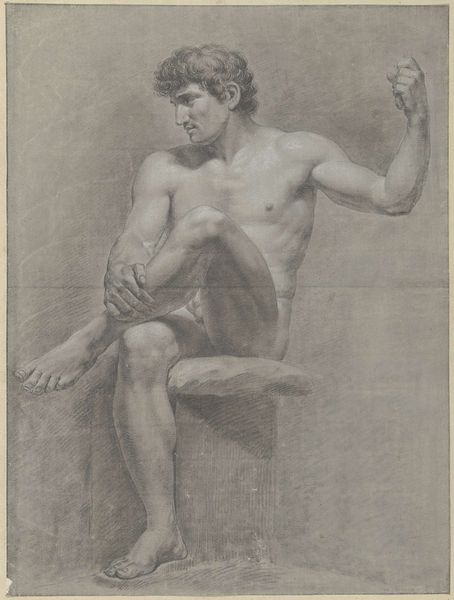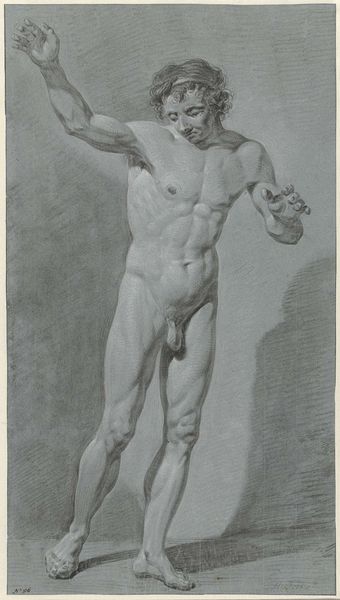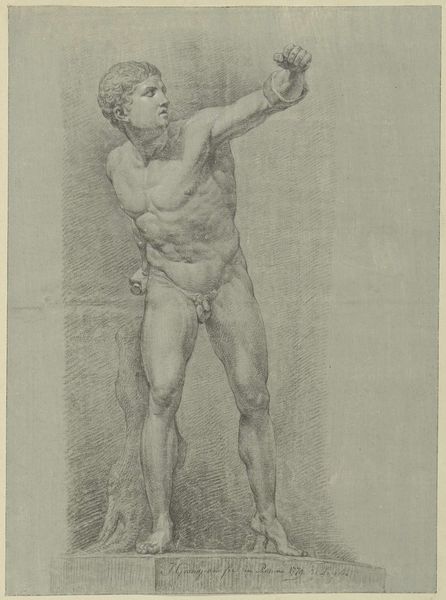
Staand mannelijk naakt, de rechterarm op een afgebroken zuil, van voren 1765 - 1781
0:00
0:00
drawing, pencil, charcoal
#
portrait
#
drawing
#
neoclacissism
#
pencil sketch
#
charcoal drawing
#
figuration
#
pencil drawing
#
pencil
#
portrait drawing
#
charcoal
#
academic-art
#
nude
Dimensions: height 528 mm, width 404 mm
Copyright: Rijks Museum: Open Domain
Editor: This drawing, titled "Standing Male Nude, the right arm on a broken column, from the front," created between 1765 and 1781 by Jean Grandjean using pencil and charcoal, strikes me as both classical and strangely melancholic. The figure's pose feels staged, almost theatrical. What do you see in this piece? Curator: Staged, yes! It's as if he’s caught mid-aria in a tragic opera. That broken column—isn’t it fabulous? It’s such a direct visual metaphor, practically screaming “ruin” and “loss.” But, like, is it *sincerely* felt, or is it just showing off Grandjean’s understanding of the visual language of Neoclassicism? It’s that tension that keeps me hooked. And what do you make of the way the light falls across his body? Does it feel real or idealized? Editor: I see the idealization, for sure. There's an almost statuesque quality to the figure. But it also feels like Grandjean is experimenting— the shading seems more pronounced in some areas than others. The texture of the hair, for example, is quite detailed compared to the relatively smooth skin. Curator: Exactly! And think about what drawing, as a medium, allowed him to do: to revise, to explore different possibilities of line and form. This wasn't just about creating a flawless representation. It was about *thinking* through the body. I wonder, do you find it strange that a study like this might be considered, in some circles, more "authentic" than a finished painting? Editor: It is surprising. I always thought of drawings as preliminary works. Curator: Maybe we should think of them as little time capsules of artistic thought. Each stroke captures a moment of discovery, of wrestling with form and feeling. What a testament to those in-between stages where artistry occurs! Editor: That's a perspective shift for me. Now I see it less as an idealized figure study, more as a peek into the artist's process, wrestling with ideas about classicism and human vulnerability. Curator: Beautifully put.
Comments
No comments
Be the first to comment and join the conversation on the ultimate creative platform.
